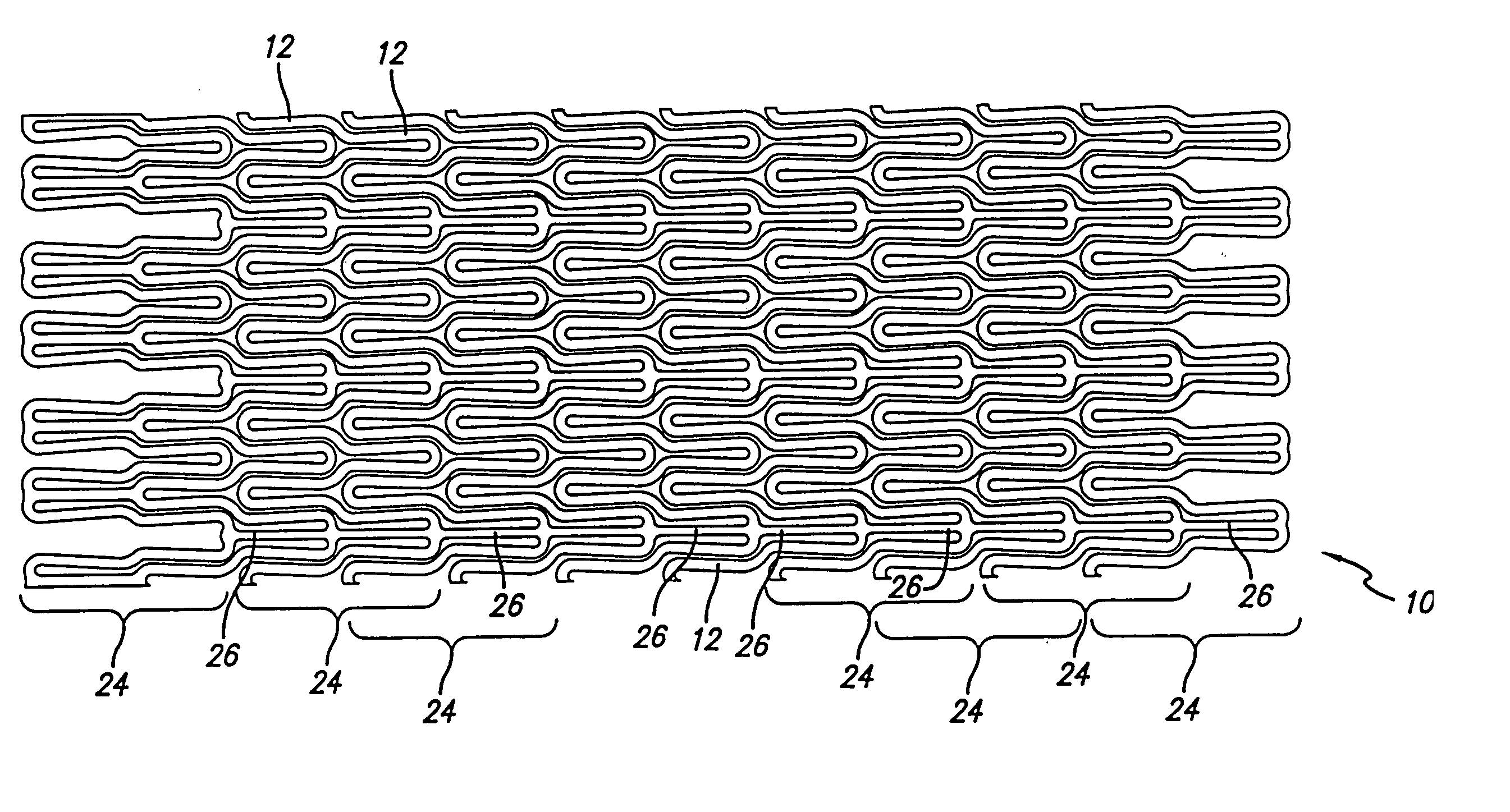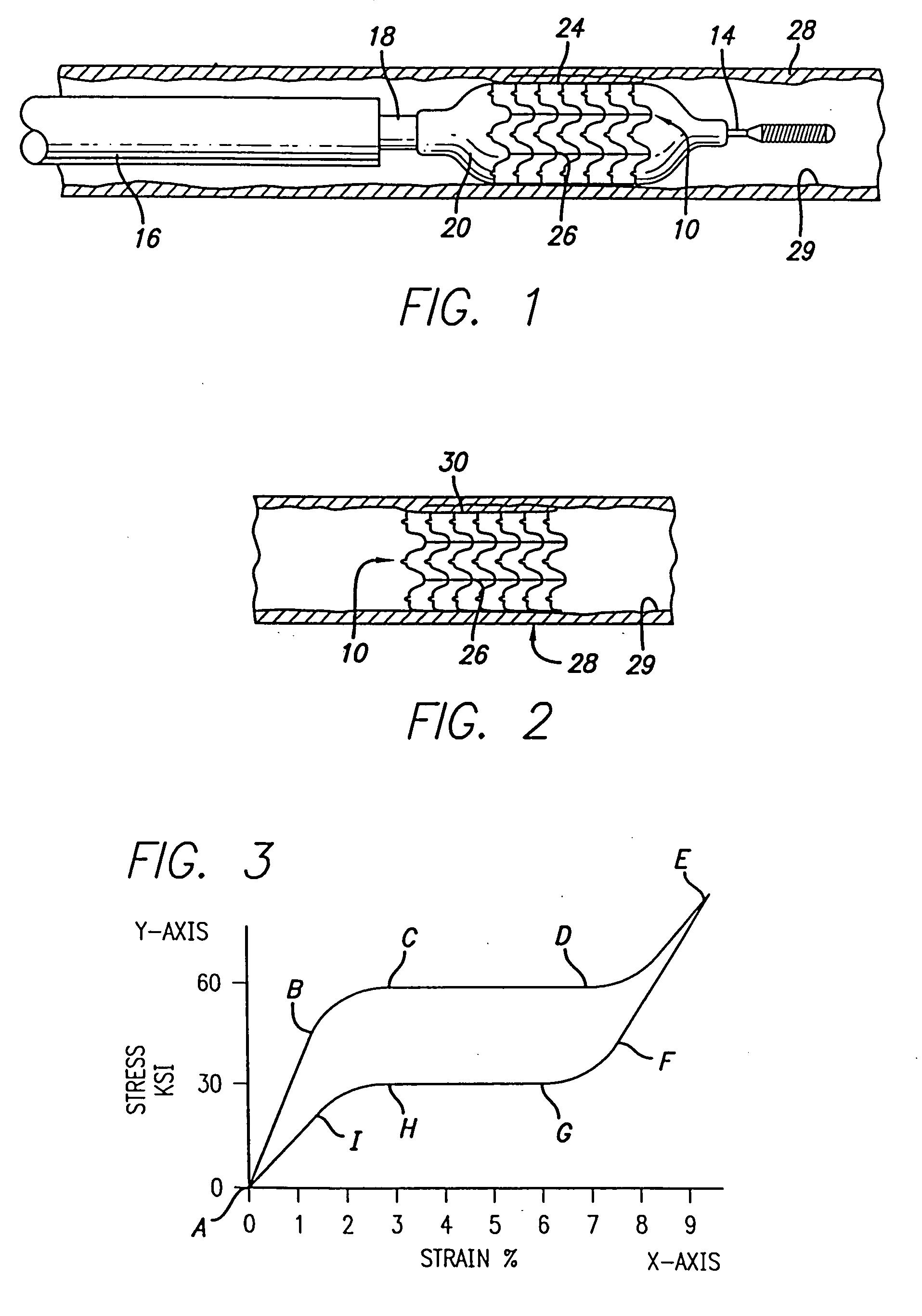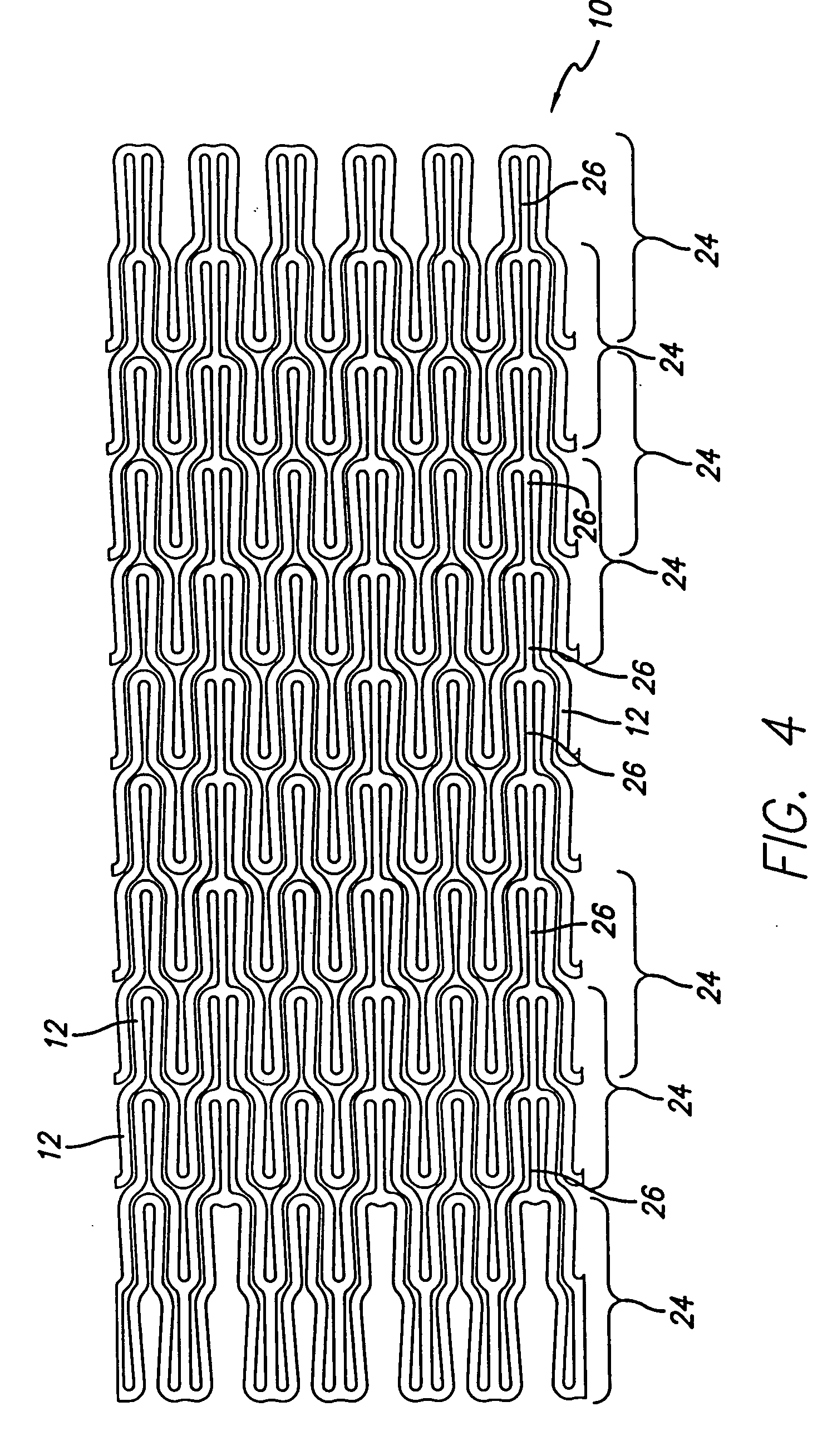Radiopaque nitinol alloys for medical devices
a radiopaque nitinol and medical device technology, applied in the direction of prosthesis, catheters, blood vessels, etc., can solve the problems of increased bleeding complications, chronic hyperplasia of the neointima, and possible development of restenosis and perhaps acute thrombosis and sub-acute closure, so as to enhance the alloy's thermomechanical properties or formability.
- Summary
- Abstract
- Description
- Claims
- Application Information
AI Technical Summary
Benefits of technology
Problems solved by technology
Method used
Image
Examples
Embodiment Construction
[0031] The present invention relates to a medical device made of radiopaque nitinol. For the sake of illustration, the following exemplary embodiments are directed to stents, although it is understood that the present invention is applicable to other medical devices usable in a body lumen as well.
[0032] The stents of the present invention can have virtually any configuration that is compatible with the body lumen in which they are implanted. The stent should preferably be configured so that there is a substantial amount of open area and preferably the open area to metal ratio is at least 80 percent. The stent should also be configured so that dissections or flaps in the body lumen wall are covered and tacked up by the stent.
[0033] Referring to FIGS. 1, 2, and 4, in a preferred embodiment, a stent 10 of the present invention is formed partially or completely of alloys such as nitinol (NiTi) which have superelastic (SE) characteristics. Stent 10 is somewhat similar to the stent disc...
PUM
| Property | Measurement | Unit |
|---|---|---|
| size | aaaaa | aaaaa |
| radiopaque | aaaaa | aaaaa |
| superelastic | aaaaa | aaaaa |
Abstract
Description
Claims
Application Information
 Login to View More
Login to View More - R&D
- Intellectual Property
- Life Sciences
- Materials
- Tech Scout
- Unparalleled Data Quality
- Higher Quality Content
- 60% Fewer Hallucinations
Browse by: Latest US Patents, China's latest patents, Technical Efficacy Thesaurus, Application Domain, Technology Topic, Popular Technical Reports.
© 2025 PatSnap. All rights reserved.Legal|Privacy policy|Modern Slavery Act Transparency Statement|Sitemap|About US| Contact US: help@patsnap.com



